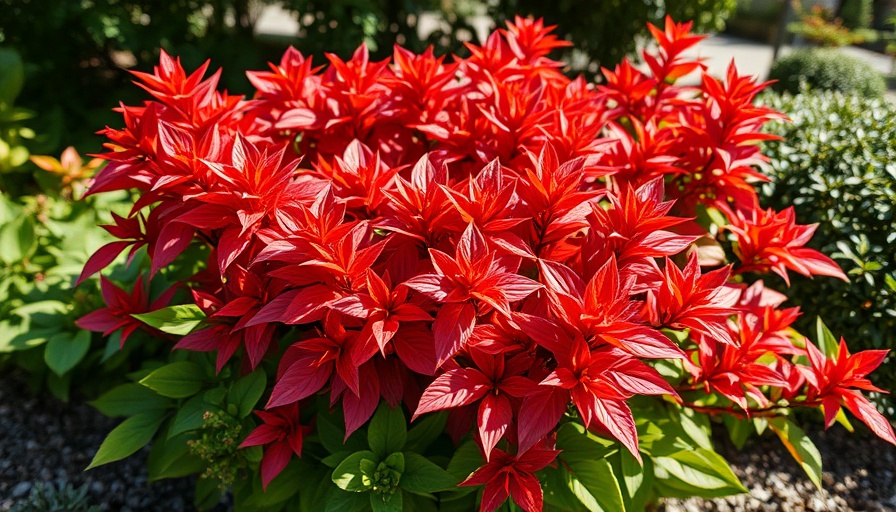
Unveiling the Beauty of Japanese Andromeda in Your Garden
If you're looking to add elegance and charm to your garden, the Japanese andromeda (Pieris japonica) is an exceptional choice. Known for its beautiful blooms and hearty evergreen foliage, this shrub not only enhances your garden’s aesthetic but also attracts various pollinators, such as bees and butterflies, making it a sustainable addition to your landscaping.
Essential Characteristics of Japanese Andromeda
Japanese andromeda is a broadleaf evergreen shrub that can reach heights of up to 12 feet. With a mature size ranging from 3 to 8 feet wide, this plant thrives in USDA zones 5 to 9. Preferring an organically-rich, well-draining soil with a slightly acidic pH of 5.0-6.0, it is best planted in partial shade to full sun.
This versatile shrub serves various purposes—from serving as an accent in mixed borders to acting as informal hedges or even creating lush screens in your backyard. With its showy, fragrant flowers blooming in early spring, it introduces a vibrant burst of color while offering year-round interest with its lush foliage.
Growing Conditions and Cultivars
When cultivating Japanese andromeda, consider the various cultivars available to suit your garden’s specific needs. Notable varieties include 'Forest Flame,' which boasts striking red foliage in spring, and 'Cavatine,' known for its compact size, making it perfect for smaller gardens or container gardening. These cultivars adapt well to different environments, showcasing the diversity in gardening plants suitable for contemporary landscaping ideas.
Practical Tips for Care and Maintenance
Keeping your Japanese andromeda healthy doesn’t require excessive effort. Regular watering, especially during dry spells, is vital. Use mulch to retain moisture and regulate soil temperature, aiding in weed control and improving soil nutrients. Furthermore, understanding garden disease and pest control can prevent common issues; be on the lookout for pests that target ornamental plants, ensuring your shrub remains a stunning focal point in your outdoor space.
Designing Your Garden with Japanese Andromeda
Integrating Japanese andromeda into your garden design opens up countless landscaping possibilities. Its dense growth makes it an excellent choice for creating privacy screens, while its aesthetic appeal can enhance any patio or front yard landscaping. Pairing it with other perennial plants will establish a diverse plant community, ensuring your garden remains visually interesting throughout the seasons.
“A garden is a prayer for the earth.” – Anonymous
Environmental Benefits of Planting Pieris
Beyond the beauty it brings, Japanese andromeda plays a critical role in supporting local ecosystems. The plant's flowers offer essential nourishment for early spring pollinators, fostering biodiversity in your garden. By planting pollinator-friendly plants like this one, you contribute positively to your local environment, encouraging a thriving ecosystem that balances nature and gardening.
Final Thoughts on Japanese Andromeda
Japanese andromeda isn’t just a shrub; it’s an opportunity to enhance your garden's interest and support wildlife. With its low maintenance requirements and stunning seasonal display, it serves as both an aesthetic and ecological asset to any garden space. Whether you are a seasoned gardener or just beginning your journey, investing in a few Japanese andromeda plants can transform your outdoor living into a vibrant sanctuary.
Consider exploring local nurseries and gardening centers to find the ideal cultivars suited for your space. Embrace this beautiful plant to cultivate a lush landscape that not only fulfills your gardening aspirations but also contributes to a healthier environment.
 Add Row
Add Row  Add
Add 




Write A Comment